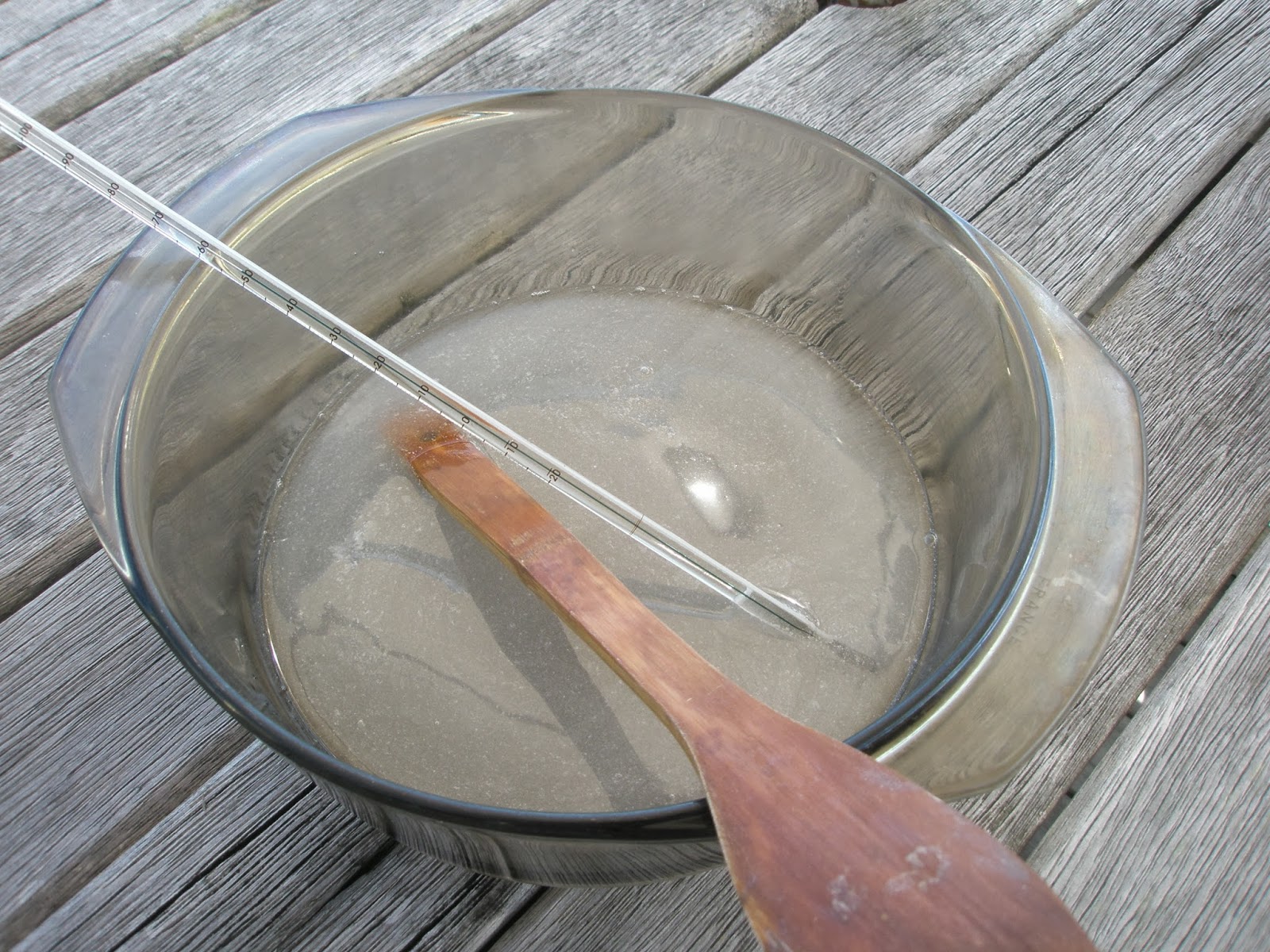The coconut and olive oils make it suitable for using as shampoo, which I have been doing for months now and find it good.
Coconut oil and caustic soda were both bought from soapcraft.co.nz
Ingredients
175g of caustic soda
600g coconut oil
600g olive oil - cheap is fine, don't use extra virgin as it gives a greenish hue
475ml water
1 tablespoon of honey (optional, for caramel colour)
Equipment
Kitchen scales
stick mixer or handheld beaters
large stainless steel saucepan
large measuring jug
thermometer ($16 from www.soapcraft.co.nz)
tablespoon, mixing spoon and rubber scraper
tea towel
molds - milk or juice cartons are good, but this time I have used a shoebox lined with a cat biscuit bag, but you can use baking paper.
Safety:
Wear gloves, glasses or safety goggles and mask (optional)
CAUTION
Caustic soda can burn your eyes and skin, so be careful. Never add water to caustic soda - it can react, blasting the chemical out of the container. Instead add the caustic soda in small amounts to the water.
Also don't wash your utensils until the next day so the caustic nature has cured and won't get into the waste water system.
Step 1
Gather all your equipment and ingredients together - you don't want to be doing this when you have your gloves etc on.
Step 2
Get your protective gloves, and glasses on. I mixed the caustic soda and water outside, but otherwise put the extractor fan on and try not to breathe the fumes.
Step 3
Measure out your caustic soda ( I used a plastic container on my scales, rather than the scales dish) and add it to the 475 mls of water in your jug. Remember to always add the caustic soda to the water - never the other way around.
Stir and watch the temperature instantly skyrocket.
 |
| after caustic soda was added to the water - outside. |
Step 4
Add honey if you want to colour your soap. Cover your jug with a teatowel and leave it outside, out of reach of children, until the mixture cools to 30 - 40 degrees.
 |
| change of colour when honey was added |
Step 5
Melt your oils together in the large saucepan, then leave them to cool to 30 - 40 degrees.
 |
| olive and coconut oils melting together |
Step 6
Once both bowls are within 30 - 40 degrees pour the caustic soda mix into the oil mix, stirring with a spoon. Use your hand held beater to thicken the mix into a creamy custard.
At this point I disagree with the magazines instructions, where it says it will become "trace" in a few minutes. This is where you can see the ripples appear and stay on the surface. This didn't happen at all last time I made the soap, nor this time, and after referring to my soap making book, which said this step can take up to an hour, I took my chances at 45 minutes, when it looked custardy, but no trace and the soap was perfect.
 |
| beginning to mix the soap with electric beaters |
The other thing the magazine said to do at this point was to add essential oils, but everything else I have read says that until the soap has cured the caustic nature kills the perfume, which is why you get milled soap, where it has been grated and remelted after it has cured and the perfumed oils added then.
Step 7
Pour your soap into the molds, using your rubber scraper to get it all.
Last time I used milk cartons, but forgot to save some for this time, so have used a shoe box lined with the cat biscuit bag (clean), but you can use baking paper to line a container. Just don't use anything made of aluminium, as it reacts with the soap.
Step 8
Cover your molds with a teatowel so they cool slowly.
Leave for a few days, or at least 24 hours.
Turn out of the molds and cut into bars.
Leave on a cooling wrack, covered, for 4 - 6 weeks to cure.
Curing ensures that the caustic soda has time to become inactive.
If there's too much caustic soda in the mix, or you don't stir it enough, the soap will be brittle and may have streaks of caustic soda in it and must not be used.
It sounds like a lot of hassle (and it is a bit) but it is worth it - and I think I only need to do it twice a year, if I don't proudly give too much away. It means no more plastic shampoo bottles or liquid shower soap.
Also, if you consider that I was paying $6 for a bar of this type of handmade soap, and the magazine has estimated that it costs approximately 50 cents a bar to make, that's not a bad hourly rate for today. I think it makes about 20 bars from memory.




No comments:
Post a Comment
Hey, thanks for visiting my blog - it is just great when you leave me a comment.